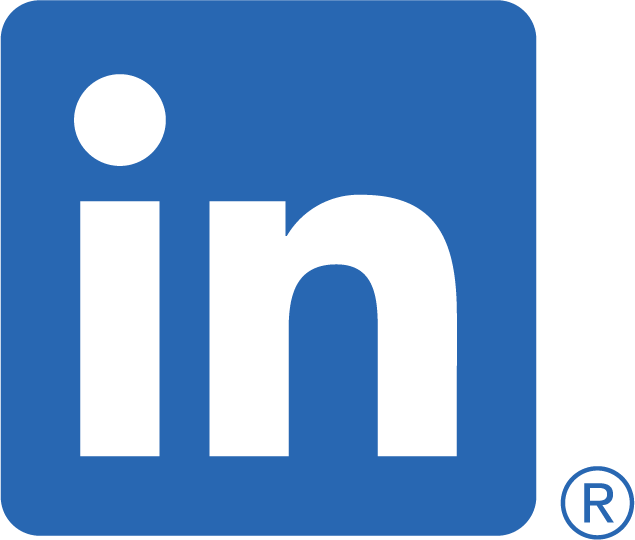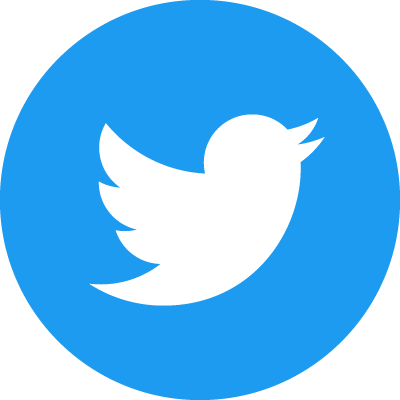A resume is a document where you as a job seeker list work experience, qualifications, and skills to apply for a job opening.
It’s an opportunity to show career highs, achievements, and what you bring to the table for the organization you want to work for. Your resume is a sales pitch that shows potential employers that you are the best candidate for the job.
In this article, we’ll show you how to build a strong resume, what to include (and leave out), and how to make your resume effective in 2023.
Let’s get right into it.
The purpose of your resume
In the past, job seekers would dump every piece of information related to skills, education, and work history into multi-page resumes and hope a potential employer would read through all of it. However, the purpose of modern resumes isn’t to archive the minutiae of your professional history.
Today’s recruiter spends an average of 7.4 seconds reading each resume. So the purpose of your resume is to get their attention in that short amount of time.
Your resume should be a short, concise document that showcases your career highlights. It should tick the boxes for skill and education requirements for the job, and show that your professional achievements had a quantifiable positive impact on your previous employers.
In other words, show recruiters and hiring managers that you’re a talented, capable employee and that you can repeat those successes for them.
While your resume must appeal to human readers, it should also be optimized for AI resume parsers and the applicant tracking system (ATS).
After you submit your resume, it’s indexed by a parser based on the keywords you included. When a recruiter searches for “results-driven project managers in Omaha,” for example, the ATS will scan the indexed resumes for these keywords and send them the results.
So the purpose of your resume is not only to get the attention of human eyes, but also to be effective for the robots who will read it first.
Resume tips for 2023
Let’s look at some tips that will help your resume impress all of your four audiences (parser, recruiter, future boss, and ATS) and be invited for an interview.
1. Keep your resume short and concise
Gone are the days of the three-page resume bound by a paper clip. If you’ve been in your career for less than 10 years, limit your resume to one page. If you’ve been working for more than 10 years, you can use a two-page resume but many professionals who are well into their career choose to stick to one page. Giving the recruiter less to skim helps ensure they see the most important information.
2. Start with your contact information
Put your name, address, phone number, and email address at the top of the first page. You may be surprised how many job applicants leave off or misplace this vital section. Properly placing your contact information tells automated resume parsers that they’re reading a resume and starting on the correct page. It also makes it easier for recruiters to find you through the ATS based on regionally specific keywords, like your city or state.
3. Write a compelling headline and professional summary
Instead of the traditional resume objective, write a well-crafted professional headline and professional summary. Your headline should be three or four words that include a job title that sums up where you are in your career and a flattering adjective that highlights what drives you or shows some attribute related to your work style.

Your professional headline should be centered and in bold and ALL CAPS. This helps it stand out for the AI so they can index your resume properly.
The professional summary should consist of 12-16 phrases in three or four lines. It presents a simple but effective overview of your professional skills and experience. It also indicates where you’re headed professionally.
Here’s what you should put on each line of your professional resume:
- The first line should list your next job titles. In other words, the job titles you’d be willing to accept at your next job. These are useful keywords for the automated systems, and they tell human audiences your professional intentions.
- The second line lists your professional skills that are most important to the job you’re applying for today.
- The third line is three to five phrases that tell recruiters your achievements and attributes related to your job title.
- The optional fourth line adds skills, achievements, and capabilities.
Don’t overload your professional summary with a lot of technical terms. While it’s important to use subject-specific vocabulary to show your understanding of the industry and help the automated systems index and retrieve your resume, use jargon only to the extent that it is easily understood.
Most of the time, the HR individuals responsible for shortlisting your resume are non-technical staff. You are pitching yourself in front of management, not in front of your future technological supervisor.
Save the technical terms for later when you are called in front of more technical staff for an interview or an assessment.
4. List only relevant skills
Not every skill you’ve acquired in your professional history will be relevant to every job you apply for in the future.
The technical knowledge, skills, and achievements you choose to include in your professional summary must be tailored to the specific job you’re applying for.
For example, when applying for a software engineer position, your excellence in Microsoft Word does not need to go into the listing.
Writing all the skills you have achieved to date will do more harm than good. If your recruiter does not find the specific qualities they are looking for in the haystack, they will skip your resume and move on to the next one.
Keep in mind that if you mention irrelevant skills the parser may incorrectly file your resume, and the ATS might forward it to recruiters for jobs you aren’t qualified for. If this happens enough times, the recruiter might decide to trash your resume.
5. Show your achievements in a quantifiable way
Your work history section should consist of bullet points (10-15 for a one-page resume, and up to 25 for a two-page resume) that describe your work experience and achievements.
Rather than dryly listing your professional greatest hits, begin each bullet point with a success verb and include a number. Numerical values like dollar amounts, percentages, and years make your achievements quantifiable. They show recruiters and hiring managers the tangible gains your employer enjoyed due to your accomplishments.
That’s what they’re looking for, after all: what you can do for your next employer.
Success verbs like “accelerated,” “generated,” and “minimized” are stronger than simple action verbs because they show the success that resulted from your actions. Here are 25 success verbs that will elevate your bullet points.
Numerical values show the outcomes of these successes. Here are some examples of bullet points using success verbs and numbers correctly:
- Eliminated 13% of overhead costs by switching providers.
- Grew our market share by 18% over the course of two years.
- Exceeded our sales quota consistently for 12 months.
6. Indicate that you are unique yet adaptable
Don’t be afraid to show off your individual professional appeal. That’s the whole point of the resume: to describe yourself as uniquely qualified for the job.
Recruiters are looking for the right fit for specific job openings. The perfect candidate for Y Company might not be a great fit for X Company, even though the job title and basic work requirements are identical. One company may prefer executives to think outside the box and take a critical or artistic approach, and another may want their C-suite employees to be results-driven and color inside the lines.
In a competitive market, you want to show your four audiences that you’re the missing puzzle piece they’ve been looking for — even if you need to reshape some of your edges.
For example, when applying for a data analyst position, your finance and business administration degrees and related achievements reflect that you will be able to provide application-based solutions to an organization and that your relationship will not be limited to just what your computer suggests.
If you can find an angle to make them relevant, include a point or two about your accomplishments (if any) in sports, social welfare, and media. These fields are currently trending, and many organizations want their employees to have some orientation toward these things, as it helps them grow in diverse dimensions. Check out this list of accomplishments and career achievements to see what you can include in your resume.
Mentioning these kinds of varied qualifications makes you stand out amid thousands of applicants and puts you in a better light. It can also affect your pay package.
But be sure to keep every element of your resume on topic and relevant to the job you’re applying for. You may be a great stand-up comic on the weekends, but the recruiter for a graphic design position doesn’t need to know this, even if they have a great sense of humor.
Put a lot of thought into the unique skills you list on your resume. Then let your resume “cool off” for a few hours and read it again from a potential employer’s perspective to see if the skills you included strengthen your resume or detract from it.
7. Focus on the future
Your professional summary should make your career trajectory obvious by telling recruiters and hiring managers what you want to do next.
The skills and certifications you’ve acquired and the responsibilities you have managed well in past jobs are only important today if they’ll be beneficial in the job you’re currently applying for. Otherwise, your past achievements are valuable only to you and not to your employers.
The recruiter is interested in how you will create future possibilities for the organization. Mention any online coursework or other ongoing education, and specifically name your target career path. Don’t wait for the hirers to ask you about your professional development approach.
Make sure that your future career path is in sync with the role you are applying for.
For example, mentioning that you’re learning cloud computing in a resume for a software engineer position will give the recruiter a picture of what you can bring to the organization today and in the coming years.
Also, do some quick research about the firm you are applying to work for and include past successes that point to how you can contribute to the vision and the goals of the organization.
For example, a recruiter hiring a search engine optimization (SEO) writer for their website will be heavily impressed if the candidate mentions how they optimized blog posts and gives a numerical figure for how much they improved the site’s domain rating or its ranking in search engine results.
A future-focused resume will give you a much better chance of landing an interview and getting hired.
8. Include job-specific keywords and use an ATS-friendly format
Using complete sentences to describe your past education, achievements, and job history will likely take up a lot of your finite page space. Even if you somehow manage to squash everything in, your recruiter might miss the important information they were looking for amid the clutter.
Here is where your professional summary comes to the rescue. The 12-16 phrases you’ll include here can be keyword-rich and save you from having to write complete sentences. It allows you to pack a lot of information and keywords into your resume quickly without it feeling overstuffed.
This is good for your human audiences as well as your automated ones. A recruiter or hiring manager can quickly skim your headline and professional summary and gain much of what they need to know about you as a candidate. The same is true for parsers and the ATS, which can pick up on your keywords to index and retrieve your resume effectively.
Approximately 70% of resumes are rejected in the first screening. Parsers and ATSs are becoming more sophisticated, and to make it past these AI-driven blockades to a human audience, your resume should include job-specific keywords that the recruiter will be searching for.
You also want a simple, straightforward format with no graphics, charts, headshots, or images of any kind. Help the parser properly scan your resume by avoiding anything that could confuse it or slow it down. Not only will a simple format help the AI do its job, but it will also make it easier for the recruiter to skim for the information they want.
Rather than submitting your resume as a PDF or other image-based format, use a Microsoft Word document, Google Doc, or other text-based format. While modern AI can scan text on an image, scanning a traditional file format is faster and less prone to error.
Avoid deluxe fonts and stick with traditional Arial or Times New Roman. You don’t want to spend hours perfecting your resume only for your text to show up with a salmon highlight on the recruiter’s screen because they don’t have your fancy font. This will be annoying to read and can get your resume deleted quickly.
Use basic formatting for line spacing, margins, bullet points, fonts, titles, and headers, as this will help keep your resume clean and clear. Don’t tweak the margins or font size in order to fit in more information. And avoid unnecessary and distracting elements like a watermark, icons, or other features that make it more difficult for software to make sense of your resume.
Although it may seem “boring,” a simple resume format is best for both your human and AI-powered audiences.
Final Words
Resume writing has evolved into a science. By creating a resume that’s short and concise, ensuring you include your contact information, crafting a compelling headline and professional summary, including only relevant skills, showing your achievements in a quantifiable way, and following our other tips, you can have a more effective resume in 2023.
You’ll have a better chance of getting past AI gatekeepers, impressing recruiters, intriguing your future boss, and landing an interview.
Here is an exhaustive collection of resume samples for different professional categories that will help you better craft your resume. You can also contact us and get started today.







